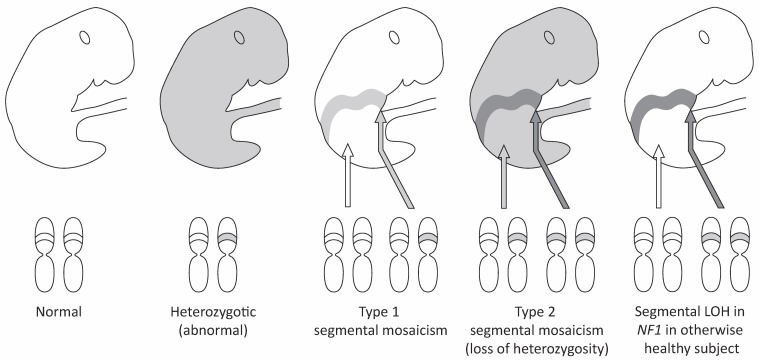Figure 19. Schematic drawings of “segmental type 1 and type 2 mosaicism” in human skin according to Happle [77]. The prerequisite for the simplified presentation is a monogenic disease. The figures are slightly modified taking into account PNST in NF1.
From left to right: in healthy individuals, both alleles relevant for the disease of interest are wildtype (white body). In an autosomal dominant hereditary disease such as NF1, an affected individual will carry the constitutional mutation in every single cell (gray body). Postzygotic mutation of one allele in a certain body region causes a heterozygous status in an otherwise healthy organism (light gray belt in white body): this status was also detected in individual cases for certain skin manifestations in NF1 gene [101] and diagnosed as a “segmental type 1 manifestation” [77]. Tumors such as (plexiform) neurofibroma in an individual affected with NF1 are explained as the result of a second mutation at the NF1 gene in all tumor cells of the localized lesion: loss of heterozygosity (LOH, dark gray belt in light gray body). When this genetic event affects the skin, there is a “segmental type 2 manifestation” of this autosomal dominant trait [77]. The LOH appears to happen by chance [81], [83]. The time of mutation (ontogenesis, postnatal) is relevant for histological type of tumor and is crucial for tumor phenotype, e.g. on the upper limb. In rare cases, both alleles are mutated but these events are restricted to a body region or body segment. In this situation, a PNF can develop in a patient without meeting the clinical NF1 criteria when both mutated alleles of NF1 have occurred in Schwann cells or Schwann cell progenitors (dark gray belt in white body). In principle, the above described distribution patterns of genetic events in a tumor suppressor gene causing an autosomal dominant inherited disease can all appear without skin involvement [79]. However, the pivotal involvement of the skin, bone and the nervous system in the genetic condition termed “NF1” are well established [1].

